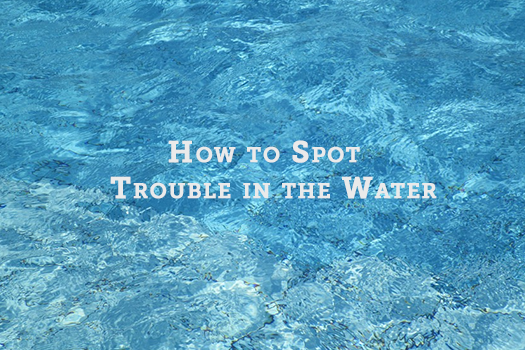How to Spot Trouble in the Water

While we all know that proper supervision is the best way to avoid trouble in the water, sometimes it can be hard to spot IF there is any trouble at all. In many cases of water safety instances, swimmers may not show any signs of distress.
The CDC stated that in 10% of child drowning accidents, the supervising adult was actually watching the child but did not realize they were in trouble. It is crucial to learning about life-saving techniques and proper supervision to know exactly what danger looks like. Retired Coast Guard Mario Vittone wrote this article with tips on how to spot trouble in the water.
How Are They Acting?
Our bodies instinctively choose to breathe rather than speak, which means that many victims will not shout for help. Some movies and T.V. shows depict frantic drowning victims flailing and screaming for help, this is just simply not a normal occurrence. While in distress, swimmers will lose voluntary control of their arm movements. They will instinctively attempt to push their arms down into the water, almost as if they’re climbing a ladder, which means they will not be able to wave for attention. If their mouth and head are bobbing in and out of the water, they are most likely getting into trouble. If a swimmer is struggling they will stay vertical in the water, and only have about 20-60 seconds on average before submersion happens.
Other Physical Signs
- Eyes unable to focus or are closed
- Not using legs – staying vertical in the water
- Hyperventilating or gasping
- Trying to swim but not making any progress
If your child shows any of these signs, there is a good chance they are in big trouble! Always make sure to read a swimmer’s actions closely. Sometimes things can seem okay, but there may be real danger lurking nearby. Vittone states that calling out to your child and asking for a response is one way to tell if they are in trouble or not. Make sure your child understands that when you shout out to them, they must respond. This way if they don’t respond, you will be alerted to the danger they are in and act fast. If your pool has a Lifeguard, always remember that they have many other patrons to watch out for as well. Do not solely rely on their watch to protect your child from getting into trouble. Your one-on-one close supervision with them is the best way to prevent an accident. One-on-one means that you are in the water and by their side, within arms reach. Always alert your on-duty Lifeguard when danger is lurking, and allow them to assist you as they are trained to do.
People and children always make noise while swimming and enjoying the water, which means that if you hear no noise or splashing, get to the pool and find out why! We know that swimming is one of the most popular activities out there, we want to help you take all the precautions you need to have a worry-free experience.
Check out Vittone’s short video for more information on how to spot trouble in the water.
